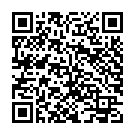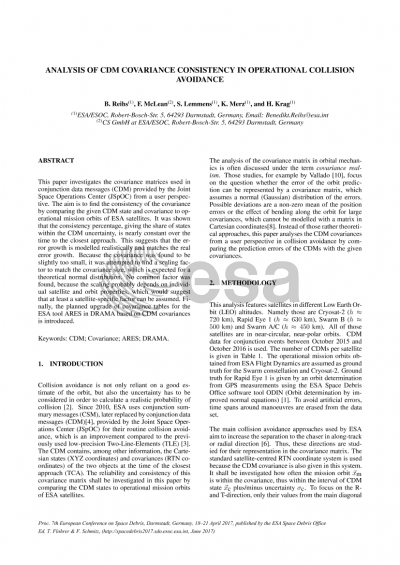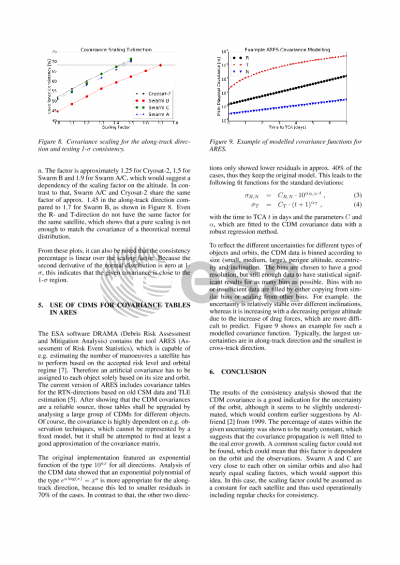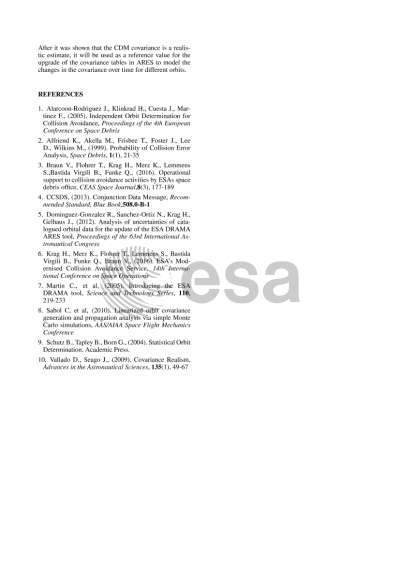Document details

Abstract
In the process of collision avoidance, Conjunction Data Messages (CDMs) are generated in case of a close encounter between two objects. This message includes the time of the encounter, the predicted positions with the consequential miss distance and the covariance matrices at the time of the encounter [1]. This information is used by spacecraft operators to decide if a satellite, the target, shall perform an avoidance manoeuvre, because in almost all cases the chaser is a non-manoeuvrable space debris object. This decision is taken after a manual analysis of the situation [2] and its efficiency depends heavily on consistent and reliable covariance information. Therefore this paper investigates the consistency of the provided CDM covariance.
For this analysis, the ESA satellites Cryosat-2 and Swarm A/B/C are chosen. Predicted positions and covariance matrices are extracted from CDMs for a time span of one year, Oct 2015 – Oct 2016. For the same period, the mission orbits of the satellites are obtained from ESA Flight Dynamics. This data is based on high-precision orbit determination and thus considered as ground truth. From this, the deviations of the predicted CDM positions can be calculated in the satellite based coordinate system RTN (radial, along track, cross track) and compared to the covariance matrix given in the same coordinates. Only the main elements of the matrix are used, not considering the orientation of the covariance, to investigate the effectiveness of the two most common avoidance manoeuvres, increasing along track or radial separation [2]. Therefore it is checked how well the calculated errors in R- and T-direction agree with the corresponding uncertainties along these axes. The investigated parameter is called consistency percentage, which gives the share of the number of predictions located within the uncertainty.
The JSpOC CDMs are consistent among all satellites and reach percentages of 50% - 60% for one sigma along the R- and T-axes. It is shown that a reasonable scaling factor around 1.5 can be applied to the covariance to reach the desired one sigma percentage of 68%. Additionally, it can be seen that the consistency percentage has a linear relation to the scaling factor, which indicates that the value is close to one sigma, because the second derivative of the normal distribution is zero at one sigma.
To conclude, this work shows the applicability of CDMs by JSpOC in operational use. It could be shown that the covariance included in JSpOC CDMs is a good representative of the uncertainty as it reaches normal one sigma consistency percentages with a small scaling.
[1] CCSDS. Conjunction Data Message CCSDS 508.0-B-1. 2013.
[2] H. Krag et al.. ESA’s Modernised Collision Avoidance Service. 2016.
Preview






